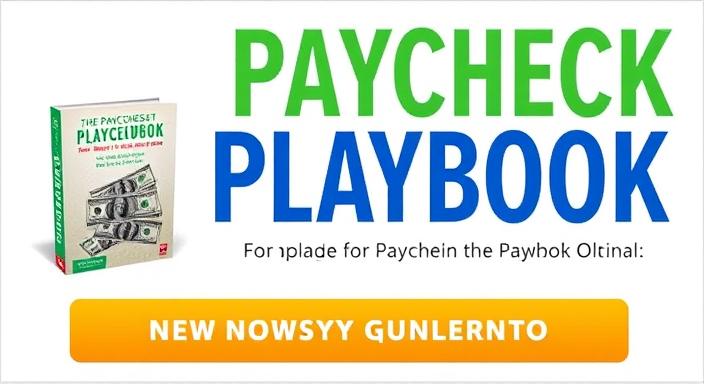Paycheck Routine for Financial Freedom and Building Wealth. The Paycheck
This offers essential tips on financial planning, saving, and wealth building from. “Do This EVERY Time You Get Paid (Paycheck Routine).” It gives you a clear, step-by-step guide to managing your income well. This method can lead to financial freedom, even if you start with little.
I. The Problem: Money Goes Poof Without a Plan.
The outlet points out a common issue: many people feel like “the money just evaporates” after they get paid. This happens because they don’t have a steady “paycheck routine.” This is usually due to little daily spends which add up big in the long run. If you spend $5 on coffee, $15 on lunch, $4 on transport, $2 on a treat, and $140 on subscriptions daily, you’ll spend about $10,000 a year.”
The author, the first millionaire in his family, was “careful with my money in my late teens and early 20s.” He stresses that having a routine can “not only help you save extra money but also build your wealth. You won’t have to work any harder than you currently do.”” The Paycheck

II. The Five-Step Paycheck Routine
We divide the plan into five categories for how to allocate your money after each payday:
1. Lust Versus Need (Basics)
Many say it’s “one of the hardest things to do, even if it seems simple,” especially with a “high standard of living.” These “small pleasures are actually taking away your financial freedom later.””
Actionable Steps: The Paycheck
Audit Your Spending: “Take a pen and a piece of paper and split it into two columns … wants and needs. Check about six months of bank statements. Circle everything you spend money on each month, like it’s new info.” Concentrate on “those small purchases that add up over time.” The paycheck
Define needs: “Needs are going to be things like rent, insurance, bills, and other utilities. The test is, if you can live without them, then it’s not a need.”
**Define Wants:** Your wants should include all the fun stuff. This means nights out, dining, bowling, golf, or anything else you love.”
Do Some Financial Math: Add up your monthly “needs” to come up with the “bare minimum you need to get by each month.”
Target Allocation: Many your financial baseline stay under 50% of your total income. However, the author believes it should be more U-shaped, around 25%.
Cut Wants: Be on the alert for things you can cut from your essentials. This could mean looking at expensive car payments or moving to a more affordable home. “Is it cheaper for you to commute daily? Probably. So stop complaining and find a place you can afford, plain and The Paycheck
If cutting your needs doesn’t work, try boosting your income. You can do this by getting a promotion or finding a side hustle. Don’t forget you will always earn more than you can save.”
Wants Allocation:To stay financially healthy, keep your wants at 25% or less of your paycheck.
2. Create a safety net.
Next on the priority list is a high-interest savings account. -“In a Perfect World, you’ll have 50% of your check remaining by now.” “And you should shoot for ‘20% into a high-interest savings account,'” the guideline says.
Key Principles:
Separate Accounts: “I use a different bank for your everyday account. Otherwise, it’s too tempting to spend.””
Purpose: This should be “a safety net that you can pull a financial cushion from in an emergency. It’s not there to earn you money.” The paycheck
Accessibility: Avoid accounts that “lock away your money for a set time.” That’s not the goal here.”
**Crucial Importance:** “I can’t stress enough how important a safety net is. Life isn’t always easy, and emergencies can happen.”
Target Amount: Shoot for “3 to 5 months of your baseline figure… stronger yet if you can get to 6 months.”
Why can’t we use the money for a TV or a car? “This is money that is only to be used in serious situations, not something to dip into when you’re running low. “One in five Americans has no emergency fund,” the source points out, “which leaves them in debt as soon as a crisis hits.””
3. Pay Off High-Interest Debt (Return on Investment, Guaranteed)
Once your emergency fund is ready, focus on this next step: pay off high-interest debt. It’s the only place for a guaranteed return on investment. I don’t want to gamble. I don’t want to risk my hard-earned money in the stock market for an 8 to 10% return. It feels risky and out of my control. Instead, I can get a guaranteed 25% return by paying off credit card or consumer debt. This debt eats away at my wealth every single day.
Debt Repayment Methods:
Avalanche Method (Logical): “Paying off the highest interest balance first. This is the most effective way to save on interest.
Example: If you owe $5,000 at 20% (credit card), $1,500 at 0% (family loan), and $2,500 at 15% (car loan), start by paying off the 20% card first. Use the $500 monthly payment for that. This is because paying off the 20% card is the best use of your cash. You would be “debt-free in 21 months and pay about $613 in interest” using this strategy.
The same debts will take “about 23 months and cost roughly $1,700 in interest.” This is “2 months and over $1,000 longer than using the Avalanche Paycheck The paycheck
Max Out Retirement Accounts (Long-Term Wealth) You can put in up to $19,000 in retirement accounts.
If you’re over 50, you can add up to $29,000. This helps build wealth and offers tax benefits.
You can divide the combined “50% towards growing your wealth” here. Make sure to take care of your safety net and high-interest debts first. The emphasis is on legitimate means of avoiding the capital gains tax.
Key Strategies:
Investment Option: “Use 35 to 40% of your extra cash. Invest it in a low-cost index fund, like the S&P 500.”” This has earned me about 8-10% on average a year, completely tax-free.

Compounding Power: If you invest $250 a month now at an average annual return of 8% you will have $1.3 M in 45 years, all TAX FREE.
Automation: “The best way to invest is to do nothing, just have it on autopilot … have it set on Auto Invest. It removes the money from you, and most of the time you don’t even realize the money is gone.”
5. The High-Risk, High-Reward Plays (Enhanced Income, Irrelevant)
This step is for those who want to be the “most aggressive” in building wealth. However, it’s “not for everyone,” Bera says. The author recommends putting 5-10% of your paycheck here.
Options: the Paycheck
Side Hustle/Business: “I save 5 to 10% of my paycheck to start a side hustle or a full business.” The less money you start with, the less room you can afford to make mistakes. You get more creative in how you use it. This helps you spot market gaps that many wealthy people miss.”
Cryptocurrency: “the final 5%.” Of course, “it’s the riskiest investment of them all.” The author has roughly 5% of their investment portfolio in Bitcoin and Ethereum. They believe in their long-term potential but also know this is risky. It could all drop to zero at any time.
III.
Conclusion The “Paycheck Routine” meets your essential needs while focusing on wealth building.
To manage your money and be independent, first, understand wants versus needs. Next, set up an emergency fund. Pay off high-interest debt and make consistent investments in tax-advantaged accounts. You can also choose to take on more risk for greater opportunity. Focus on steady, disciplined allocation instead of just earning more or working harder.


